Metal Detecting Research and Exploration - A Complete Guide, page 54
Footwork and Observation
SPOTTING CELLAR HOLES and THEIR REMAINS - GROUND DEPRESSIONS
In the past, just like nowadays, houses were built on higher grounds, so that rain and ground water would drain away from the foundations. If the higher ground was not available on the property, a square earth mound, from three to five feet in height was made by home builders. A cellar hole (or root cellar) was dug and inlaid with stones inside the mound.
A root cellar - the only means for storing and preserving fruits and vegetables all year around, was usually built under the house for easy access. Since the invention of a refrigerator, the root cellars still have been in use in many parts of the world.
A Well-Preserved Stone-Inlaid Cellar Hole Hidden in the Forest
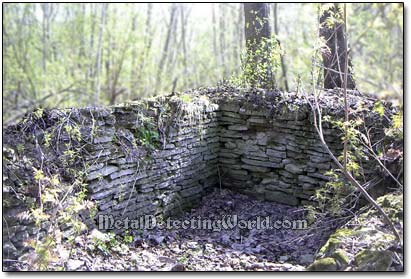
The cool temperature in the root cellar was naturally maintained by the cellar's design constructed below the ground level. The temperature was kept above a freezing point - 0°C (32°F), usually at +1°C (34°F) during the winter months, and below +4°C (39°F) during the summer.
If, for example, the temperature rose above +4°C, the potatoes would usually begin sprouting and then would be rendered useless. The rectangular-shaped cellar hole was stone-walled or stone-inlaid for maximum structural strength.
The dimensions of a cellar hole can often be an indicator directly proportional to financial stature. I can say from my own treasure hunting experience that the larger the cellar hole, the more valuable metal detecting finds I would recover around it.
Investigate all shallow ground depressions and earth mounds of rectangular shapes and square dimensions that are close to the dimensions of a single house, and give more time and effort to the large cellars especially if you are cache hunting.
A Ground Depression Indicates a Site of Homestead
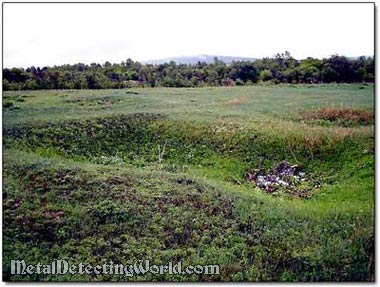
Ground Depression at the Colonial Homestead Site in New York
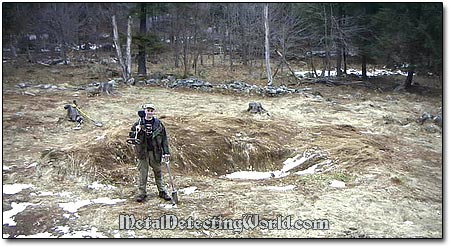
Pay a special attention to small piles of rocks sticking out of earth mounds and covered with moss. Usually a few small trees grow on top of the mounds. If the rock formation follows the shape of the earth mound and is piled up within it, these rocks are remains of the house foundation or cellar's wall which eventually caved in a while ago, and this is certainly a treasure hunting site!
This is a Site of Former Homestead Too!
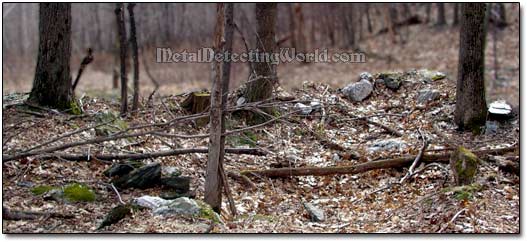
Remains of a Small Stone-Inlaid Cellar Hole Filled with Water
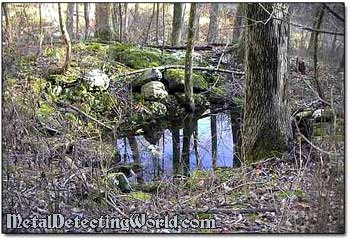
When GPS navigation is not available, various natural landmarks would help you find your position on the map and locate abandoned cellar holes in the area. Make sure you know How to Use a Compass or, if without it, how to determine the north direction. Knowledge of basic survival skills is essential for any treasure hunter.
A clue to locating an old homesite could be just a stone slab barely visible in the wooded area down the road. Observation and keen awareness are two traits that you, as a treasure hunter, must employ to be successful. Always study your surroundings and look for anything that would indicate past activities of people.
It is Always Fun to Unearth Spanish Silver Reales around Cellar Holes in New England
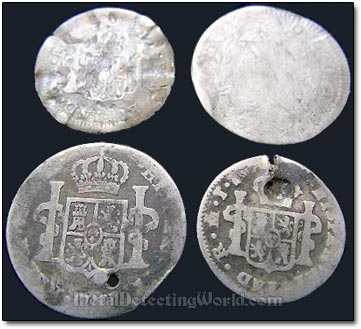
Please read my article - a complete guide to metal detecting at the abandoned homestead sites - How To Metal Detect Around Cellar Holes Successfully.